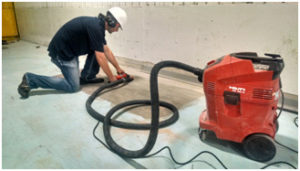When it comes to running a vet clinic or animal hospital, maintaining high sanitation levels is one of the most critical responsibilities you have. After all, clients bring their pets to you to make them healthier, not to contract a new virus of infection. Achieving quality sanitation levels and preventing transmission starts in the areas that your patients may spend the most time– veterinary cages.
While cleaning a cage may seem straightforward, it could be a bit more involved than you think.
The steps to properly cleaning a cage
Properly cleaning a cage should take about 5 to 20 minutes, depending on the size and the type of cleaner you are using. If your staff members are cleaning the kennels in record time, they may mean well and trying to work efficiently. Still, it is an indicator that they are skipping over necessary steps– knowingly or unknowingly.
Remember, cleaning veterinary hospital cages is more than just making them look nice. It’s ensuring that microscopic bacteria, parasites, and other unwanted and easily-transmitted hosts are killed before the next pet takes up residence.
The simple steps to properly cleaning an animal cage are:
- Remove any items from the cage (toys, blankets, bowls, etc.) and sanitize as appropriate for the item.
- Spray all sides of the cage with your professional-grade disinfectant cleaner, including the top, bottom, back, left, right, and the interior and exterior of the door. Make sure the disinfectant reaches each corner and crevice. Try to give an even spray to cover all surface areas while avoiding overspray into any occupied neighboring kennels.
- Let the disinfectant sit. Most disinfectant cleaners require a set amount of contact time before it can effectively kill off all bacteria. This is the most commonly missed step, as people tend to spray and wipe immediately.
- Wipe off residue (respray if needed to remove streaks). If the cleaner is powerful, allow time for the cage to clear out. Some cleaners may also require a thorough rinse to ensure the removal of residue.
Each cleaner may require slightly different criteria, so carefully read, and follow the instructions on the disinfectant’s label. Then, communicate those instructions carefully to your staff to create a consistent (and correct) cleaning protocol.
Choosing stainless steel kennels
In addition to standardizing the sanitation of the cages, you may also consider investing in stainless steel animal equipment. Unlike plastics, which can harbor bacteria, medical-grade stainless steel is easy to clean and disinfect and is less likely to harbor germs and viruses.
At TriStar Vet, we design and manufacture stainless steel equipment specifically for veterinarians. Shop our high-quality veterinary hospital cages and veterinary cages, stainless steel veterinary scales, and other equipment to see why so many veterinarians have chosen us to furnish their clinics.


